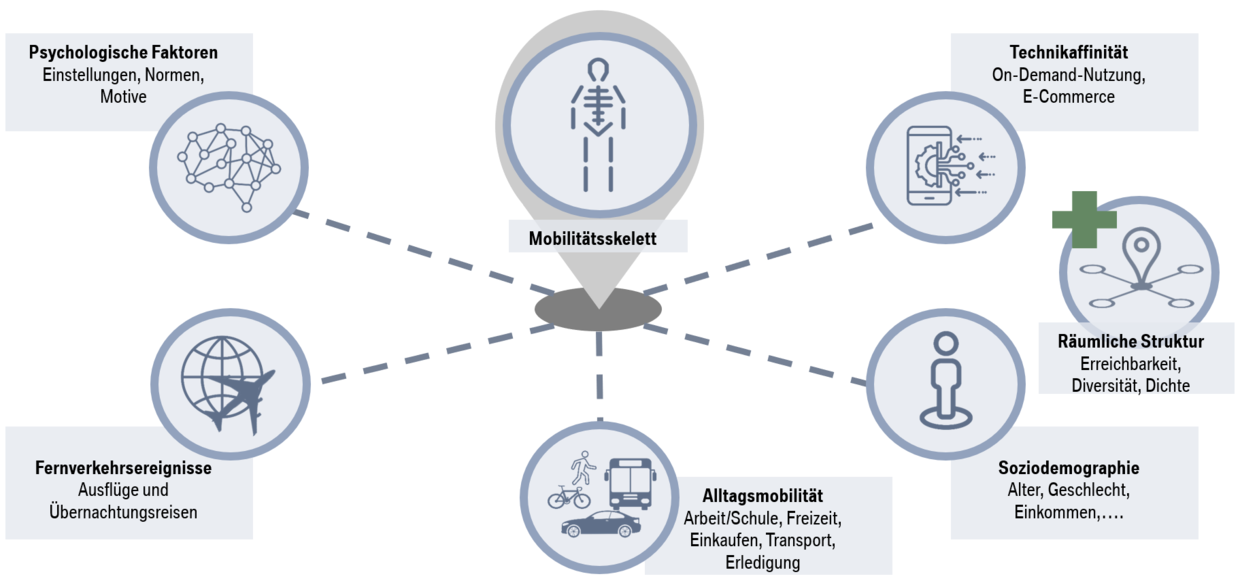Travel Behavior Research (mobility solutions) for the BMW-Group: The Travel Skeleton
- contact:
Miriam Magdolen, M.Sc.
Lukas Burger, M.Sc.
Andreas Rall, M.Sc.
Nicolas Salbach, M.Sc. - funding:
BMW-Group
- start:
2015
- end:
running

Problem Statement
Travel diaries which are traditionally used for capturing travel behaviour are time-consuming for the respondents and are also often limited in terms of the information they can provide. Based on the findings of the German Mobility Panel (short: MOP), which is a traditional longitudinal travel survey on the basis of a one-week travel diary, a new and more efficient survey approach was designed. This approach is designated as “travel skeleton” and has been used several times in international contexts, e.g. in Berlin, San Francisco and Shanghai. The travel skeleton focuses on capturing the “typical” travel behaviour of people. Both the relevant framework of individuals’ travel and the individual travel behaviour in a typical week of everyday life are addressed in this survey approach in a simplified form. Furthermore, the survey approach contains comprehensive questions on the intrapsychic evaluation process regarding mode choice (mobility psychology), on long-distance travel (day trips and trips with overnight stays) and on the tech-savviness of people. The travel skeleton thus provides a basis for the comprehensive analysis of people’s travel behaviour.
Objective
The travel skeleton is constantly adapted in various projects in order to provide a robust tool allowing to analyse diverse objectives of market and mobility research. It is used for the simple and efficient measurement of travel behaviour and the influencing variables determining this behaviour.
Methods
The travel skeleton was applied in several projects funded by BMW and enabled, among others, the analysis of the following questions:
- Market analyses and comparison of mobility conditions and behaviour in different cities worldwide (e.g. city comparisons)
- Analyses of travel behaviour, e.g. multimodality, assessing the role of the private car
- Definition of car dependency (Who owns a car and who needs a car?)
- Detailed analyses of attitudes to different means of transport as well as motives for car use
- Definition and segmentation of mobility types in different cultural contexts based on cluster-forming procedures
- Identification of ODM-affine groups of people (On-Demand-Mobility)
